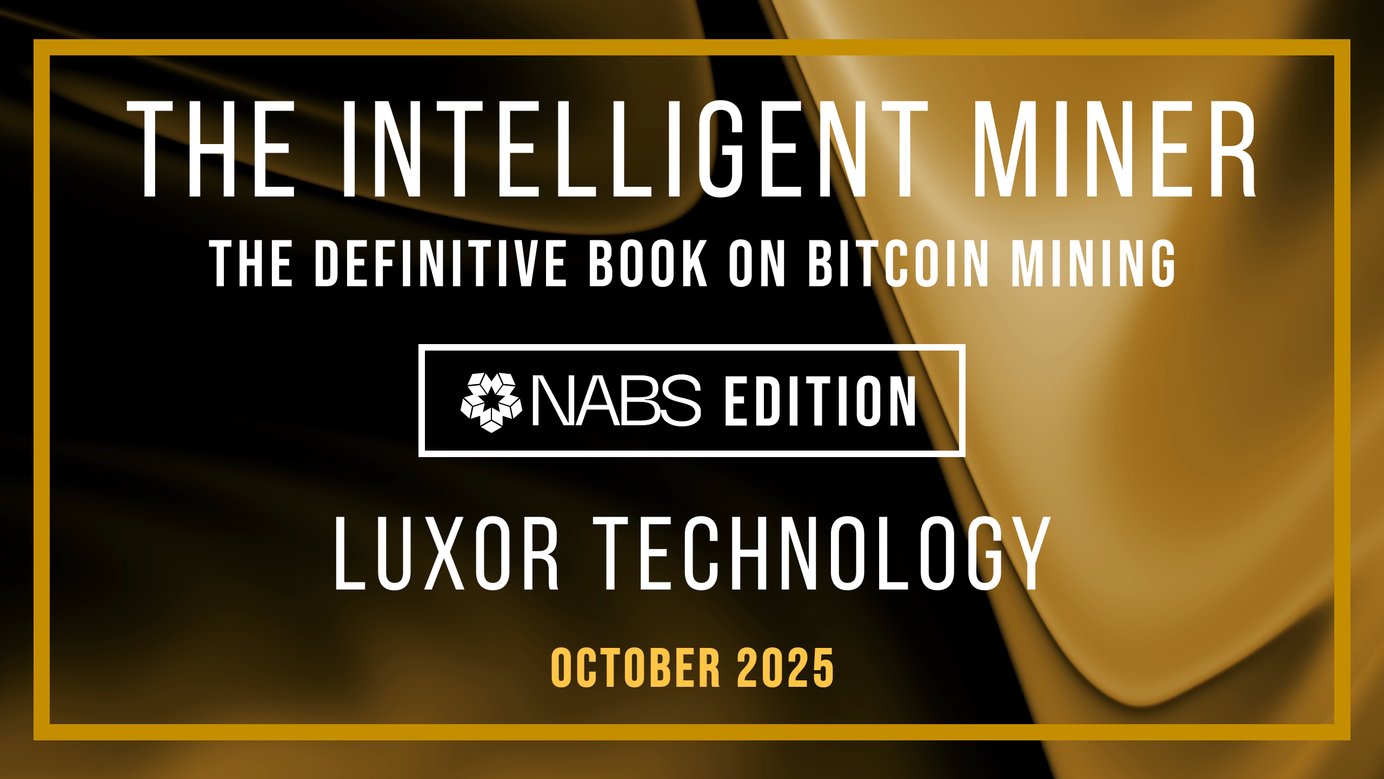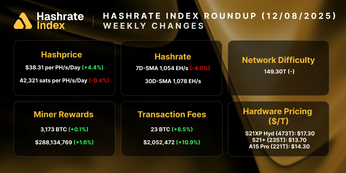
Bitcoin's Price Crash Illustrated In 6 Different Charts
When Bitcoin's price dips, ASIC prices, mining profitability, crypto mining stock prices, and on-chain activity follow.
Bitcoin’s price is taking a dump, and when Bitcoin takes a dump, everything in its universe takes a dump, too.
Hashprice (mining profitability), ASIC prices, on-chain volume, crypto mining stocks–all of these are sensitive to Bitcoin’s price movements. So when Bitcoin's price is going down, you could make a safe bet that these datapoints (among others) are heading south, too.
To illustrate just how much Bitcoin’s price can alter its universe, here are a few charts to illustrate the ripple effects of Bitcoin’s price on its network, mining ecosystem, and markets.
Bitcoin Hashprice, Mining Profitability Slides to Yearly Lows
In Bitcoin mining, hashprice is a metric we use to measure the revenue potential of a terahash of compute power. We measure hashprice as $/TH/day, so if hashprice is $0.18/TH/day, then you could expect a 100 TH S19 to earn $18 a day when it’s hashing to a full-pay-per-share (FPPS) mining pool like Luxor.
The dominant denominator for calculating hashprice is Bitcoin’s price itself, so when BTC goes up or down, then you can expect hashprice to follow accordingly. Of course, mining difficulty determines how much BTC a miner will earn per unit of hashrate, so difficulty affects hashprice, as well. As such, a steep reduction in difficulty can offset a decline in BTC’s price to drive hashprice upward even as BTC’s price trends downward (a good example of this was the profitability boost miners enjoyed after China’s mining ban, even as BTC’s price was cut in half).
With Bitcoin some 45% off its November 2021 all-time high, hashprice is at its lowest point in over a year at $0.1763/TH/day.
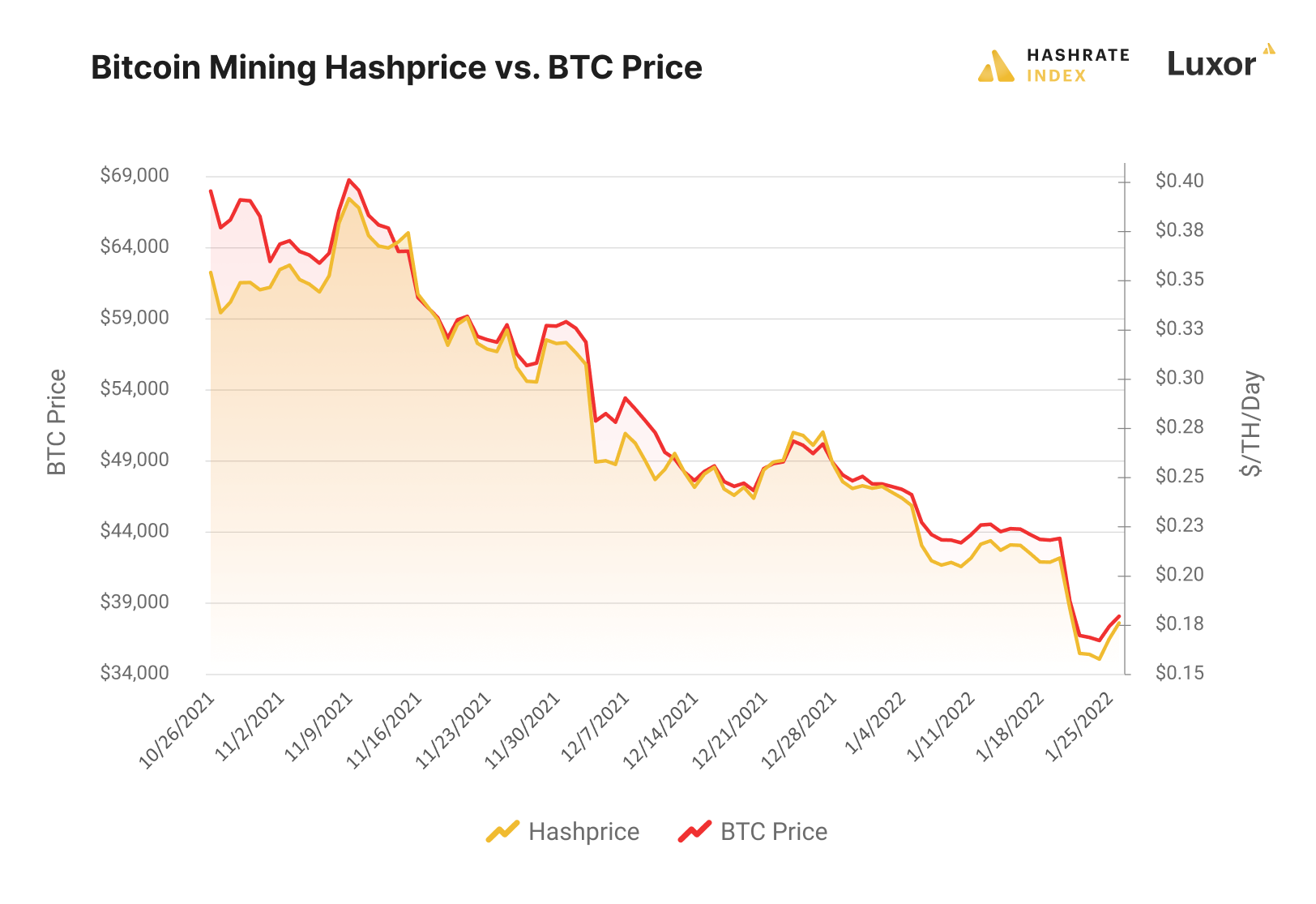
Market conditions have reduced Bitcoin’s hashprice by more than 50% since it hit $0.42/TH/day in October 2021. Miner margins have shrunk accordingly. An S19 hashign at a $0.06/kWh power price, for example, is now earning 64% less than it was during October 2021’s hashprice peak, while an M20 is earning 69% less.
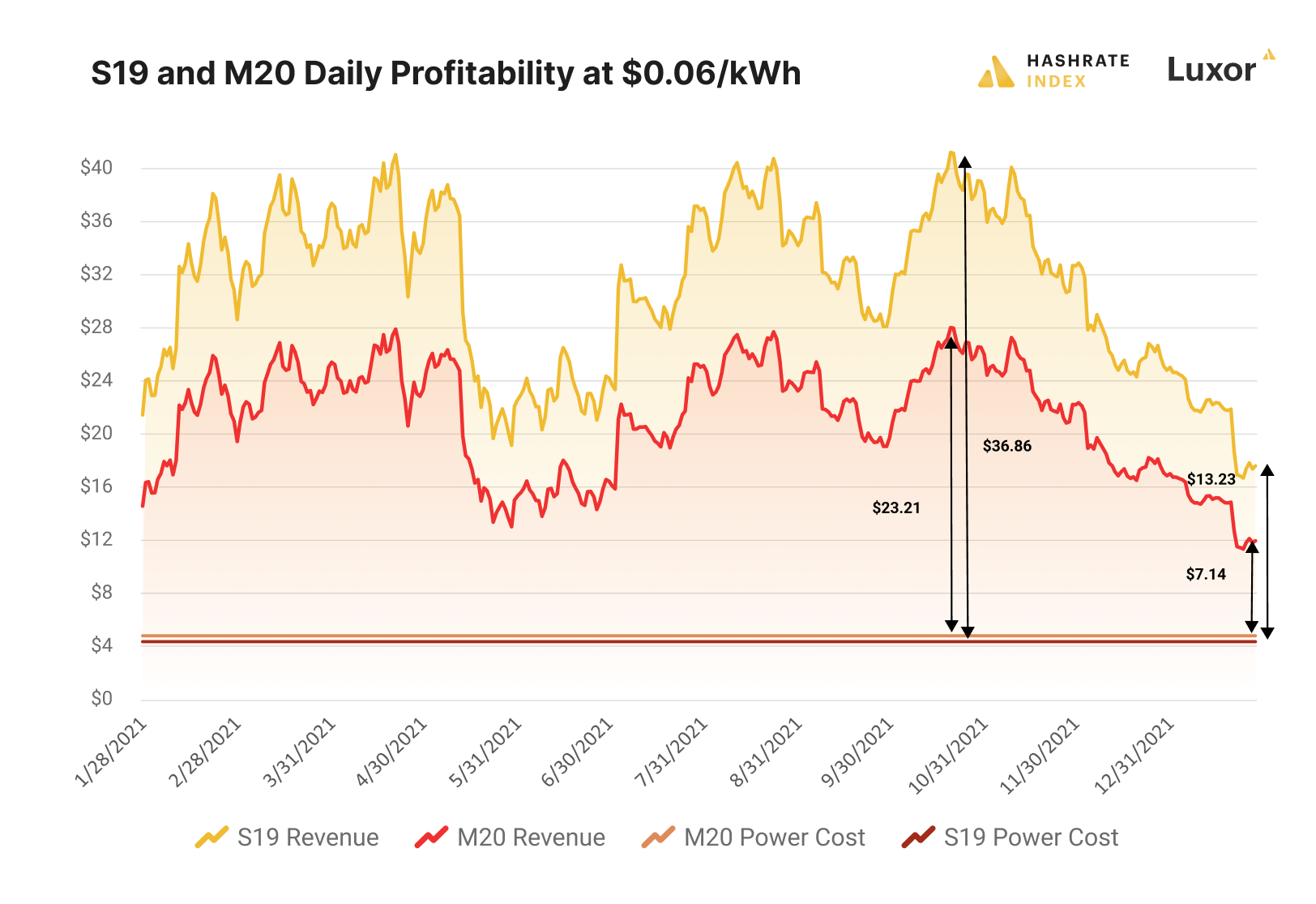
Bitcoin Mining ASIC Price Bend but Don’t Break
Even though rigs are raking in less profit than last year, ASIC prices aren’t coming down as much as they did the last time Bitcoin traded in $30k territory.
Since Bitcoin’s price dictates a mining rig’s profitability, ASIC prices will rise and fall with Bitcoin’s price because Bitcoin's price impacts their earnings potential. S19s, for example, sold for ~$2-3k at the beginning of 2021 before a surging Bitcoin price pumped them to ~$10-12k in April and May of 2021
Now that Bitcoin is substantially down from its all-time high, ASIC prices are cooling off, as well–but they haven’t fallen to the same degree as they have in the past.
Bitcoin’s price has fallen 45% since it started slipping in November, but newer generation rigs and middle tier rigs have fallen 8% and 10%, respectively.
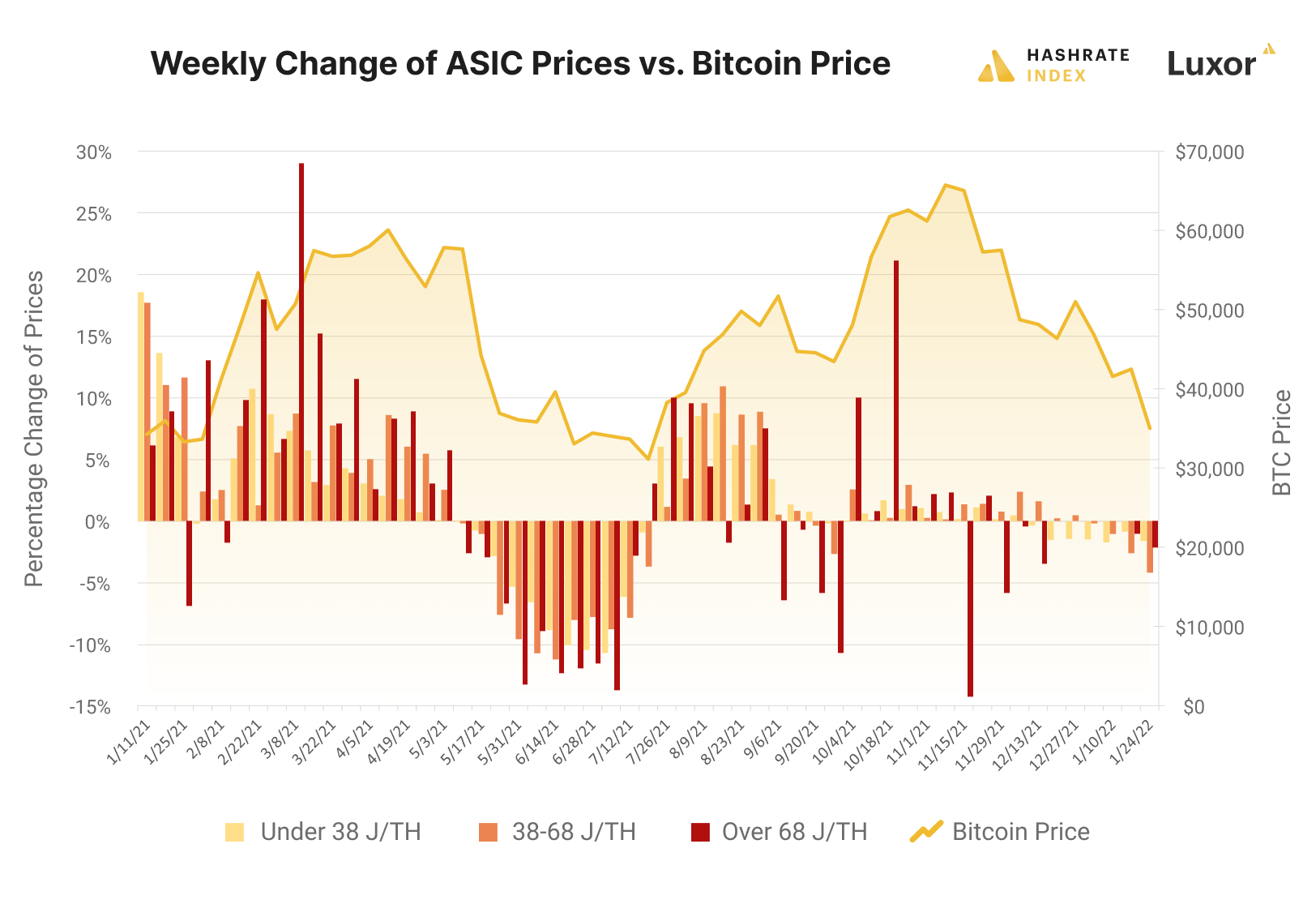
Compare this to the summer of 2021, where post-China ban panic selling drove rig prices down a precipitous 50%. This conveys that, right now, rig prices are less sensitive to the current Bitcoin sell-off than they were last summer, suggesting that China’s mining ban was the primary catalyst behind the June/July 2021 ASIC fire-sale.
Bitcoin Mining Transaction Fees Trend Lower
Typically, when number goes up for Bitcoin’s price, so does on-chain activity, and vice-versa when number goes down. As on-chain volume dwindles, transaction fees shrink accordingly.
Ever since China’s mining ban, transaction fee volume has fallen to yearly lows. And transaction fees as a percentage of block rewards continue to slide during the current market sell-off.
From September 27 through November 27 in 2021, for example (the timeframe when Bitcoin’s price ran up to a new all-time high and then broke below $60k), transaction fees made up, on average, 1.54% of block rewards. From November 27, 2021 to January 27, 2022, transaction fees were 1.27% of block rewards, a 27% drop.
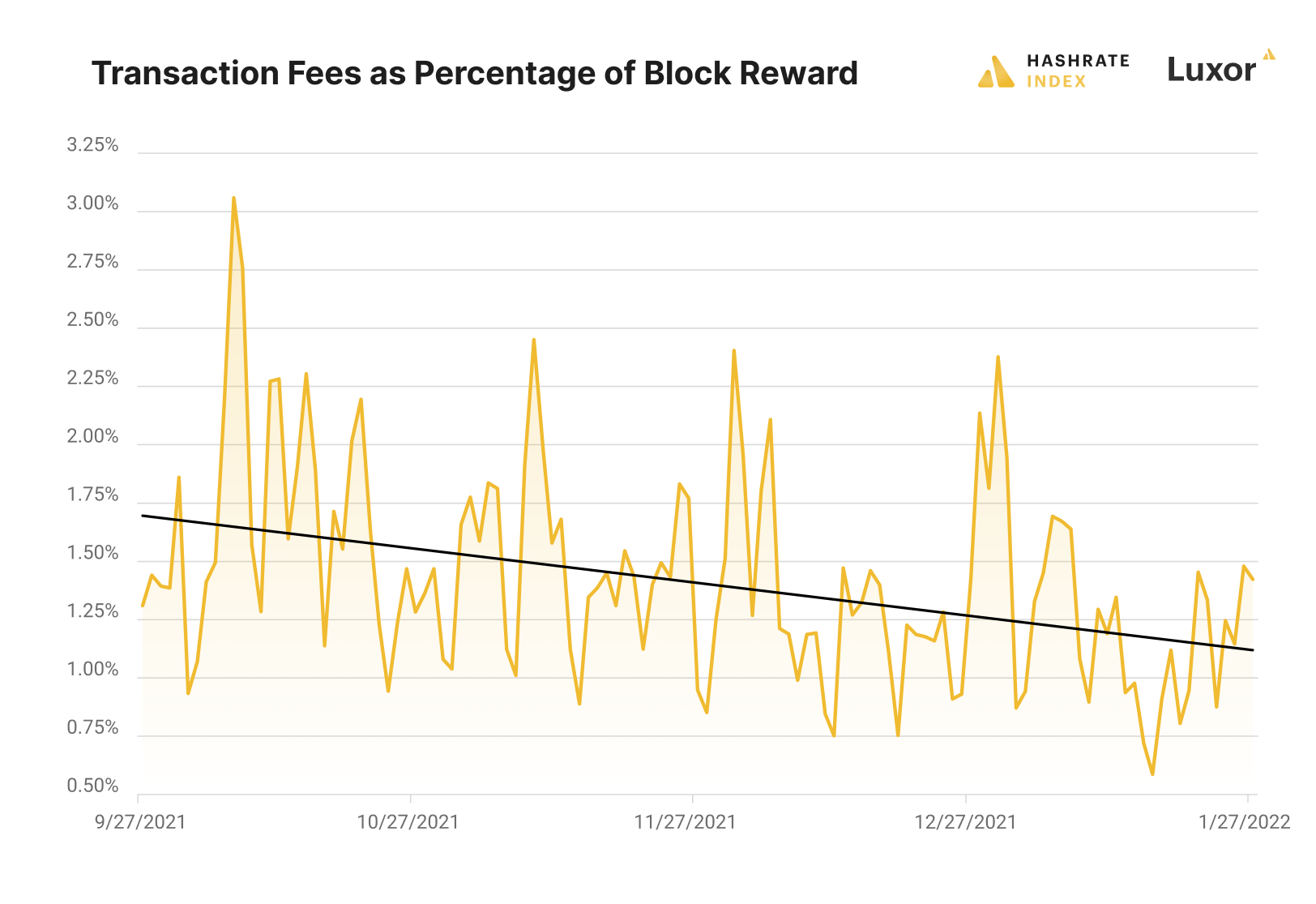
Crypto Mining Stocks Take a Hit
Bitcoin miners are perhaps the most exposed to Bitcoin’s volatility out of all the stakeholders in the entire Bitcoin ecosystem. So naturally, when Bitcoin’s price gets bludgeoned, crypto mining stocks get bruised, as well.
Looking at the Viridi Crypto Mining ETF ($RIGZ) and Hashrate Index’s Crypto Mining Stock Index, these indices have fallen 62% and 52%, respectively, since their autumnal peaks in November 2021.
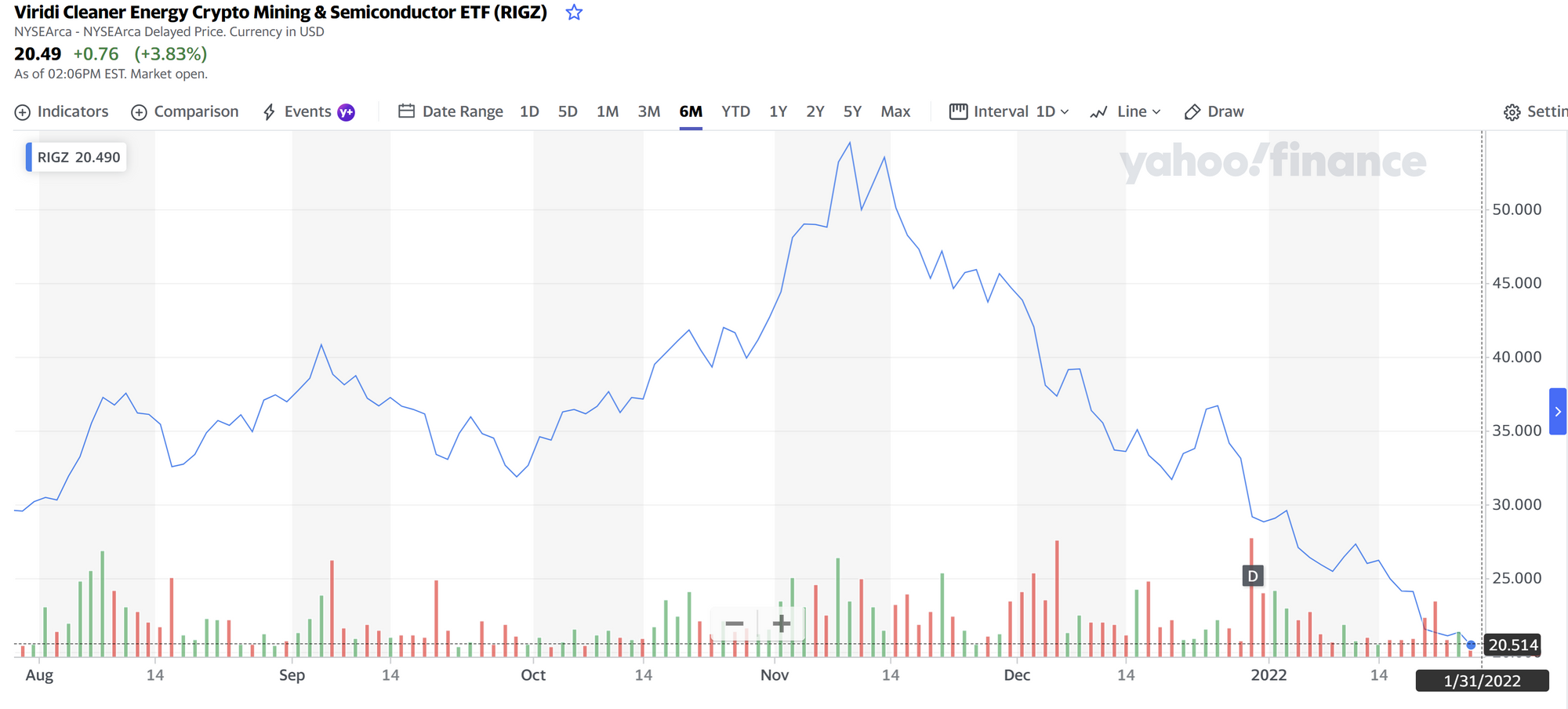
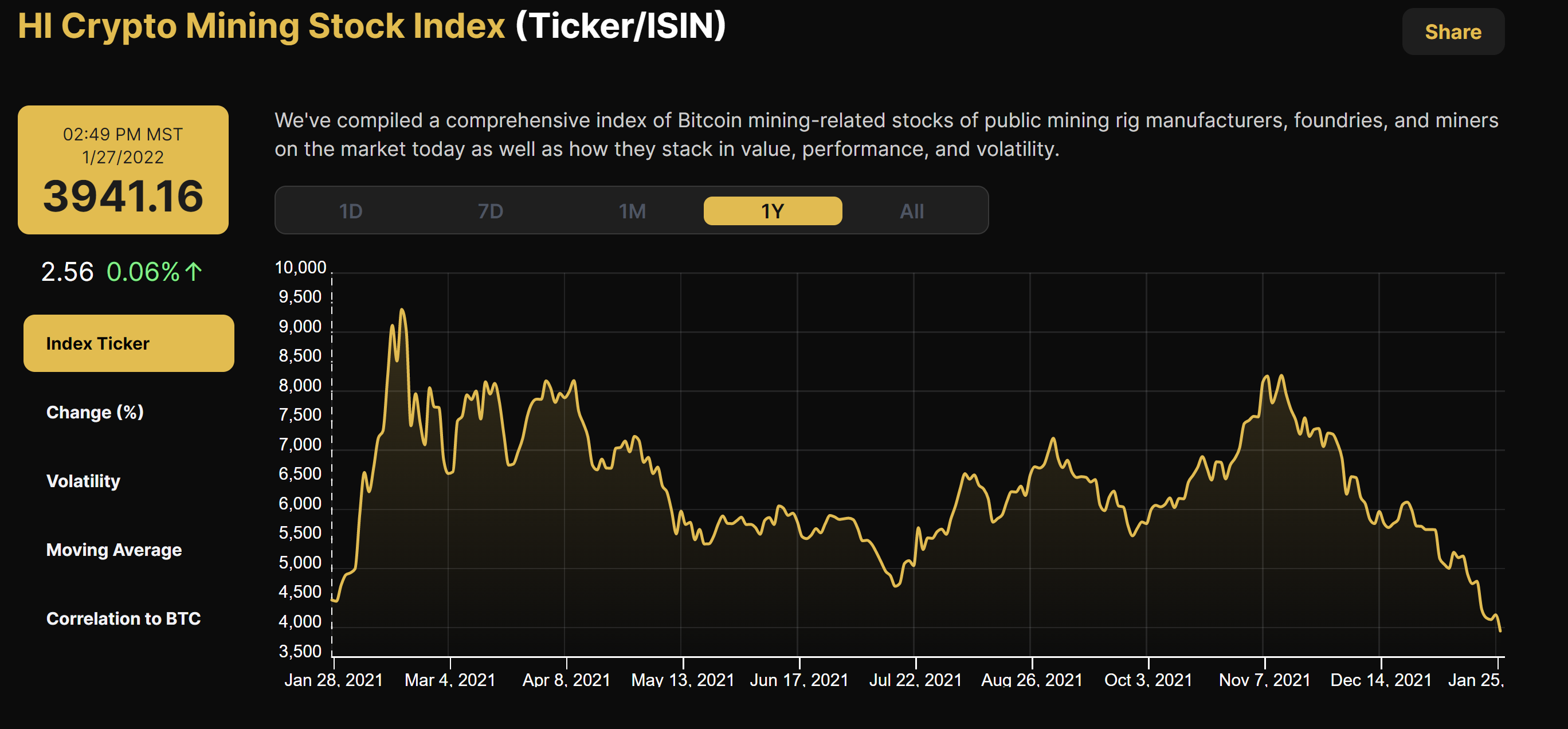
During these periods of Bitcoin price drawdown, those miners who hold more Bitcoin on their balance sheets typically experience greater sell pressure, as many investors and traders treat these crypto mining stocks as proxies for Bitcoin's price.
Header photo by Jonathan Cosens Photography on Unsplash
Hashrate Index Newsletter
Join the newsletter to receive the latest updates in your inbox.

